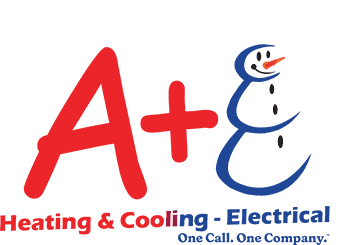Electric vehicles are growing in popularity, with new drivers adopting this technology all the time. An electrical connection is needed to charge a car, and space isn’t always available at public charging ports. In our most recent blog, the electricians at A+ Heating & Cooling – Electrical discuss adding a home electric car charging station to allow you to conveniently recharge your car at home so you always have the power you need.
What Does a Home Electric Car Charging Station Do?
A home electric charging station allows electric vehicle owners to connect to a power source for charging at home. The on-board charger within the vehicle takes the alternating current supplied by the home’s electrical connection and converts it to direct current that is stored in the car’s batteries to be used later on.
Should I Install a Home Charging Station for My Electric Vehicle?
The majority of electric car charging is completed at home, with drivers reporting over 80 percent of vehicle charging is performed using these stations installed at a residence. Having a personal charging station installed in your garage or driveway is the ultimate convenience, allowing you to charge your vehicle without restrictions and time limits imposed at public charging stations. Residential electric rates are typically low and stable, so at-home charging provides a very affordable way to fuel the vehicle. The installation process isn’t highly complicated, and the equipment doesn’t require a huge financial investment.
Considerations When Adding a Home Electric Vehicle Charging Station
To make sure your new home EV charging station performs as needed to supply your car with power, you must keep in mind some key points as you plan for this addition.
Equipment Options
The manufacturer of your electric vehicle can provide specifications for necessary equipment if you wish to install an electric car charger at your home. Electric vehicle supply equipment to install Level 1 charging systems is reasonably simple, while equipment to build Level 2 charging stations requires more investment.
Complexity of Charger Installation
When you wish to install a Level 1 EV charger, modifications to your home are not always necessary. The equipment simply connects to your home’s electrical system via a 120-volt plug on a dedicated branch circuit. If you do not have a dedicated branch circuit currently available for your home’s EV charging station, consult an electrician about installing one for you.
For a Level 2 charger, a 240-volt plug will be needed as well as a dedicated circuit of 20 to 100 amps. Specialized charging equipment must be installed to facilitate this level of charging.
Your municipality may require permitting for the installation of electric vehicle charging stations, so be sure to consult your local permitting authority.
Which Level of Charging Is Best for Your Needs?
A Level 1 home electric car charging station provides your vehicle with around 2 to 5 miles of range per hour the vehicle is connected and charging. A Level 2 charging station delivers a range increase of 10 to 60 miles per hour of charge time. For all-electric cars, a Level 1 charging station is typically not suitable to provide the range needed for many drivers’ daily travel, though it can sustain those who drive hybrid electric vehicles in most cases.
Think about the distance you travel between charges as well as the amount of time you are able to plug in your vehicle at home to determine the right type of home charging station for your situation.
Car Charging Station Installation in Ocean Isle Beach
The licensed electricians of A+ Heating & Cooling – Electrical perform safe, reliable installation for residential EV charging station equipment as well as electrical upgrades and modifications that may be needed to the home. Contact us today to request an estimate for your project.



